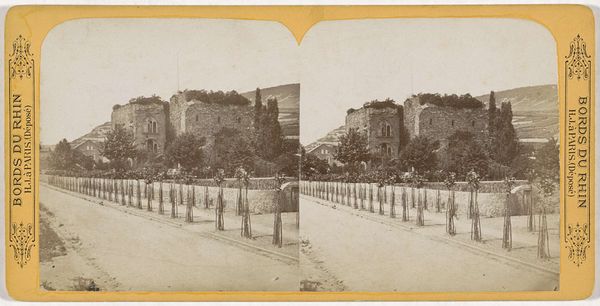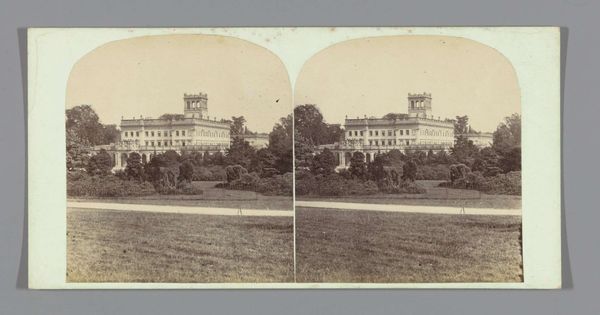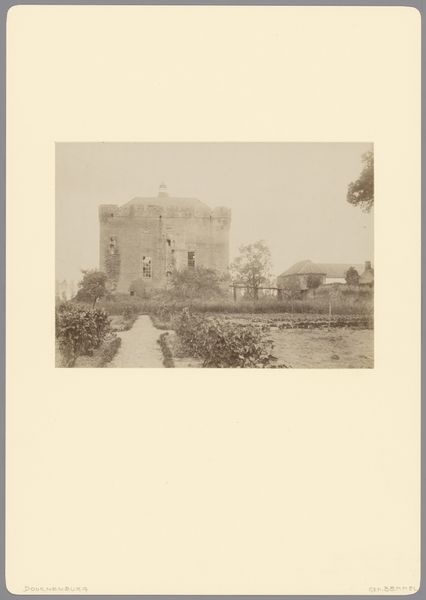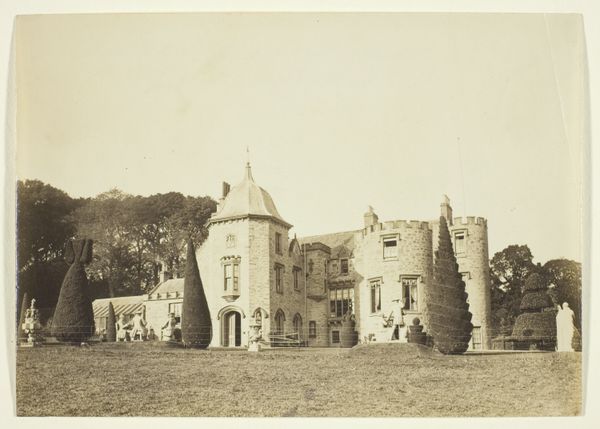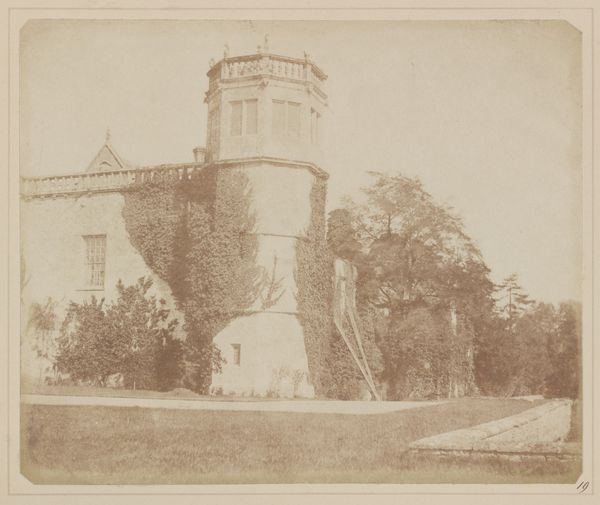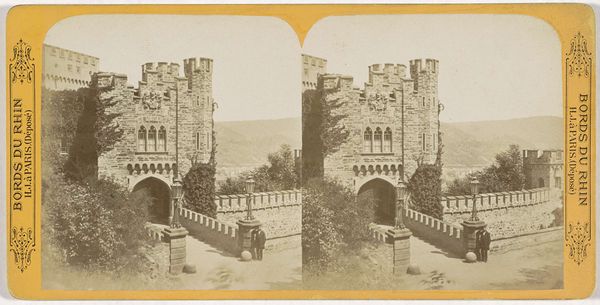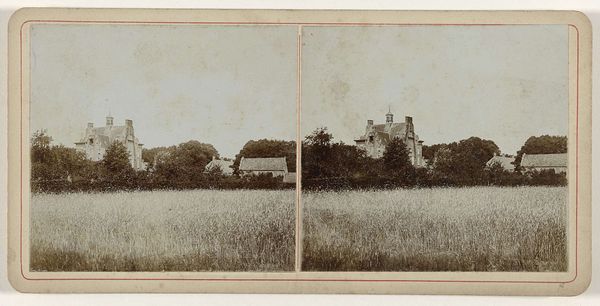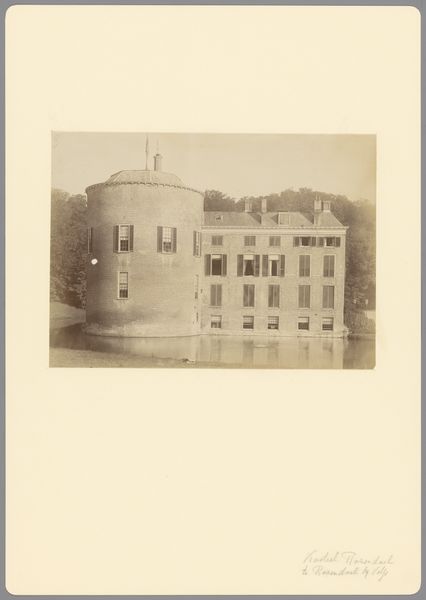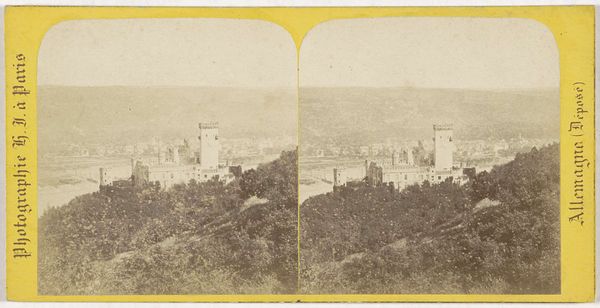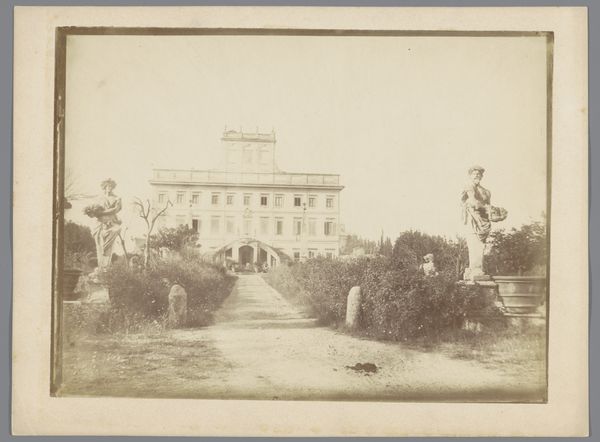
Dimensions: height 86 mm, width 172 mm
Copyright: Rijks Museum: Open Domain
Curator: This stereoscopic albumen print, titled "Slot Stolzenfels bij Koblenz, Duitsland" comes to us from Hippolyte Jouvin in 1864. Editor: My first impression is of its grand scale; the castle looms impressively over the dense, lower forest. It’s quite formidable despite the softness of the photographic tones. Curator: Indeed. Jouvin captures a structured symmetry within this romantic landscape, almost as if to create a perfectly balanced composition of architecture and nature. The castle’s geometrical lines and the calculated arrangements of windows against the forest foliage, together produce this captivating duality. Editor: Speaking of architecture, consider the labour embedded in the original castle’s construction and in the mining and production of its stones! Each stone representing countless hours worked by human hands. What was once a formidable architectural undertaking now serves to delight those enjoying this albumen print, made using both manual skill and the technological innovations of the mid-19th century. Curator: Quite so. And this duplication further underlines the core themes of 19th-century Romanticism: The sublime within nature mediated through man-made constructs, duplicated now through this emerging technology of photography, making art accessible. It creates a semiotic relationship, each component reliant on the other for full articulation. Editor: I see this photo more as the commodification of idealized images, though. Albumen prints like these allowed for mass distribution; picturesque views sold as keepsakes. What price did the landscape – or the people maintaining the landscape - pay for these consumer desires? Curator: A complex duality of preservation through art and, perhaps, exploitation in its reach. It does offer, however, through these formal components, a glimpse into 19th century aesthetic ideals. Editor: While that is relevant, examining the materials helps us think more critically about art production. And consider the role of photography within burgeoning tourism. Curator: I believe we both agree that Hippolyte Jouvin leaves us with much to consider in this photograph. Editor: Precisely. From production to composition to the consumption of images, it reveals an awful lot.
Comments
No comments
Be the first to comment and join the conversation on the ultimate creative platform.


